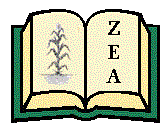Files
Description
In October of 1753, George Washington, a 21-year-old major in the Virginia militia, volunteered to carry a letter from the governor of Virginia to the French commander of the forts recently built on the headwaters of the Ohio River in northwestern Pennsylvania. The French had recently expanded their military operations from the Great Lakes into the Ohio country, and had spent the summer of 1753 building forts and roads along the Allegheny River, with the design of linking their trade routes and sphere of influence down the Ohio to the Mississippi. Virginia governor Robert Dinwiddie believed them to be in violation of treaties and claims that made those territories part of Virginia and Pennsylvania, as granted by the British Crown, and his letter to the French commander instructed him to cease, desist, and depart from those regions.
Washington left Williamsburg, Virginia on October 31, 1753, and completed the round trip of more than 1,000 miles by horse, foot, canoe, and raft in about ten weeks. He was accompanied by Christopher Gist, an explorer and surveyor employed by the Ohio Company, by Jacob Van Braam, a French Interpreter, four Indian traders and baggage-men, and various Indian delegations and guards, including Tanacharison, known as the “Half-King.” Washington accomplished far more than the mere delivery of a letter: he practiced diplomacy to keep the Native leaders allied to the English cause; he interviewed French deserters and reported on the extent of French military posts between New Orleans and the Great Lakes; he reconnoitered the Forks of the Ohio with an eye to the proper site for building a fort; and he inspected and reported on the construction of the new French forts and made estimates of their strength and preparations for the following year’s expeditions.
When Washington arrived back in Williamsburg on January 16, 1754, Governor Dinwiddie immediately asked him to prepare a written report for the House of Burgesses. Dinwiddie then had this report printed, and it became very popular reading. The Virginia legislature was so pleased with his mission and his report that they voted him a £50 reward. The Journal of Major George Washington was reprinted in various colonial newspapers as far away as Boston, and a British edition was issued in London later that same year, for which Washington sent materials for the preparation of a map.
This online electronic text edition of the Journal is based on the first American edition published at Williamsburg in February 1754. It includes some annotations for the nonspecialist reader and a note on the text discussing the sources and the few emendations made.
It is accompanied by 2 maps, attached as supplementary PDF files: one is a copy of the map that appeared with the London edition, showing the whole region from the Atlantic to the Mississippi, based on materials furnished by Washington; the other is a detail derived from the map accompanying Thomas Jefferson’s Notes on the State of Virginia (1787), showing the frontier region through which Washington travelled, between Cumberland (Md.) and Lake Erie. Of the two, the Jefferson map shows the geography with somewhat greater accuracy.
Publication Date
1754
Publisher
Zea Books
City
Lincoln, Nebraska
Disciplines
American Studies | Defense and Security Studies | Diplomatic History | European History | Indigenous Studies | International Relations | Military and Veterans Studies | Peace and Conflict Studies | Public Affairs, Public Policy and Public Administration | Race, Ethnicity and Post-Colonial Studies | United States History
Recommended Citation
Washington, George, "The Journal of Major George Washington" (1754). Zea E-Books in American Studies. 32.
https://digitalcommons.unl.edu/zeaamericanstudies/32

Included in
American Studies Commons, Defense and Security Studies Commons, Diplomatic History Commons, European History Commons, Indigenous Studies Commons, International Relations Commons, Military and Veterans Studies Commons, Peace and Conflict Studies Commons, United States History Commons


